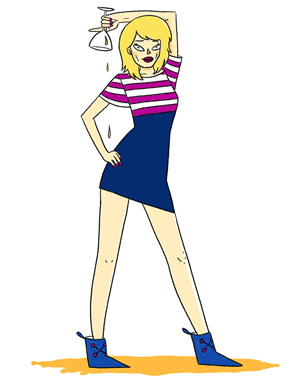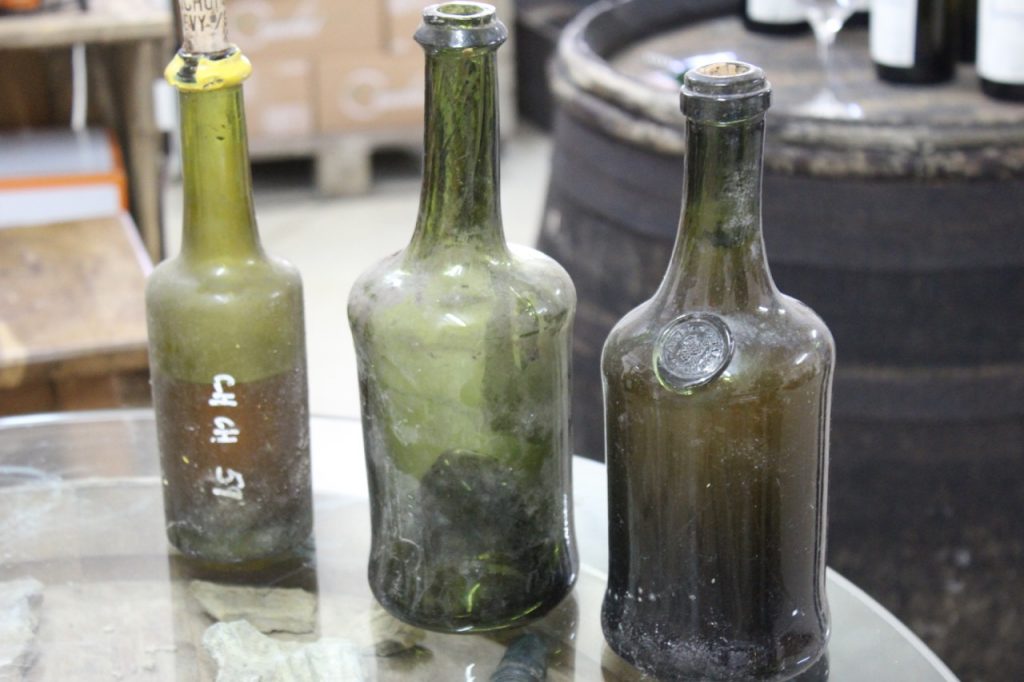
Damien Courbet is among a new wave of grower/winemakers in the Jura. He’s travelled widely working vintages around the world from Bon Climat in California to South Africa. Closer to home, in Burgundy, he worked with Nicolas Potel and further south with Oliver Merlin in the Mâconnais. He’s now back home from globetrotting to make wine in his village of Nevy-Sur-Seille on a small river in the valley below Château Chalon.
The craggy outcrop of Château Chalon below. This is a south facing slope freshened by a wind which blows down the valley. The soil is grey/blue marl interspersed with the rock. It’s quite sticky soil.
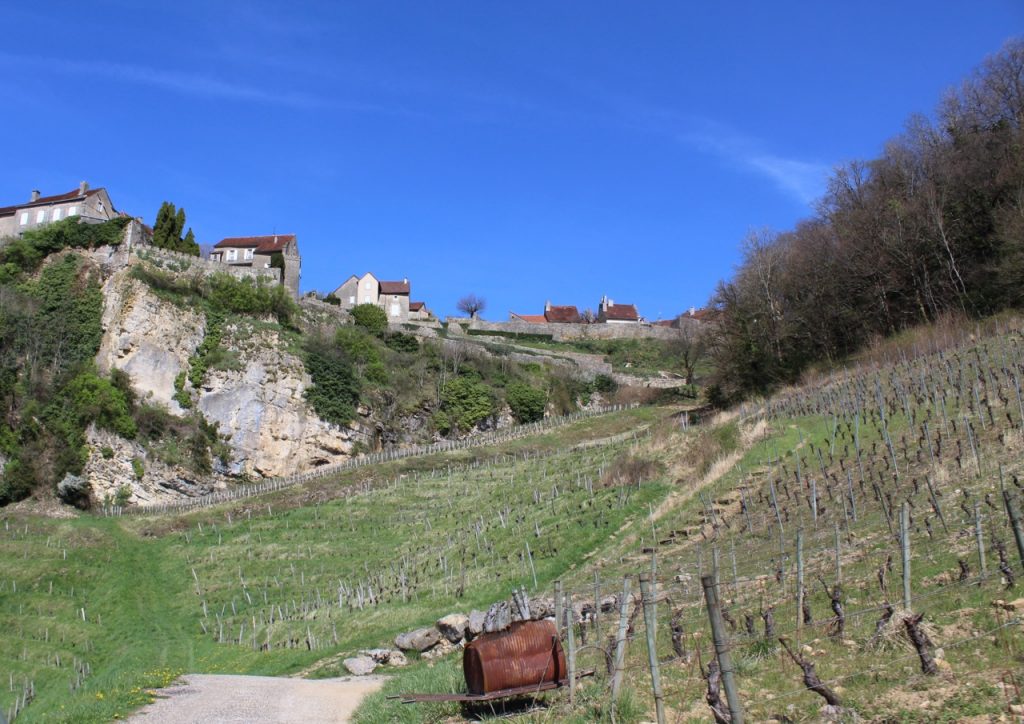
In this region, called the upper Seille, Damien can make AOC Château-Chalon and AOC Côtes du Jura. He’s not yet certified as organic and yet to be admitted to the green nose gang (see Nose in the Green blog), so I cut along to visit him the morning after their tasting.
Damien has twenty parcels dotted across three hills with a variety of aspects and soil types, so there’s plenty of scope to make use of all five of the regions grape varieties and styles. He makes a little red – a fresh, fruity, easy drinking Poulsard and an light elegant Trousseau with slight minerality on the finish. The reds are for easy drinking. I was more interested in the whites.
Topping
Damien keeps his ouillé whites properly topped, by adding wine to fill any gap in the barrel. I find the term ‘ouillé’ or topped is used rather too loosely in the Jura. There were wines labelled ‘ouille’ at the Nez dans le Vert tasting with oxidative notes. You can’t be half hearted about this topping business to keep the oxygen out as the wine very slowly evaporates. It helps to use a bit of sulphur too! I liked Domaine Courbet Les Isles 2014 – a Chardonnay with a direct citrus palate, sweet acidity, a mineral finish and plenty of energy.
He also makes Cremant de Jura. I only tasted the base wine, which was promising – elegant and delicately barrel aged, which is clearly not destined to be a simple sparkling aperitif, but pitching at Champagne quality with similar bottle ageing on lees.
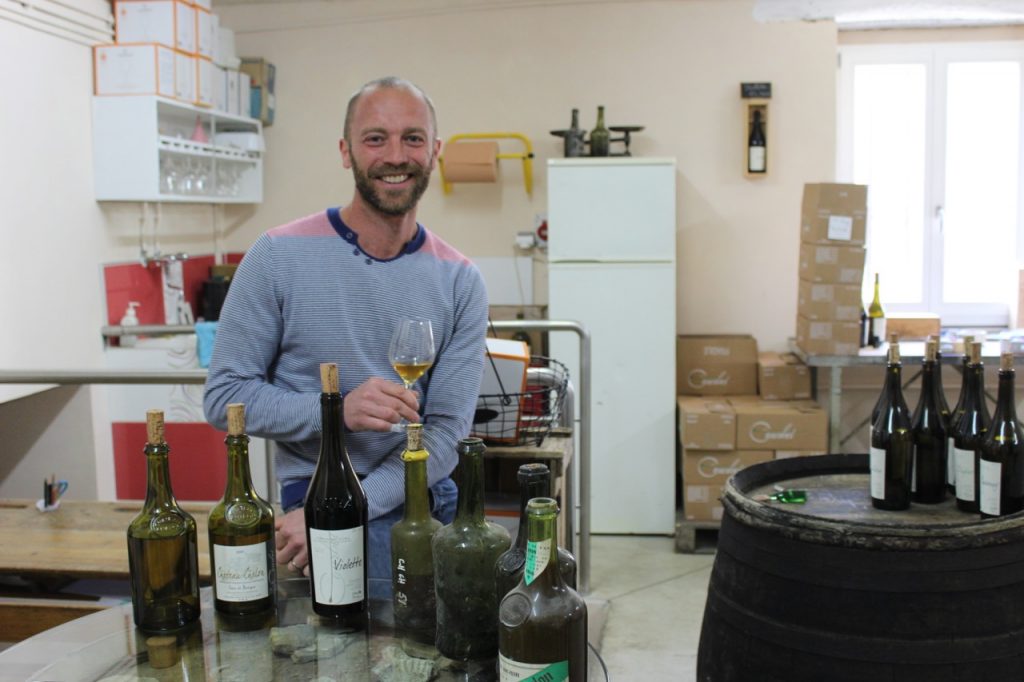
The slowly matured, sleeping beauties of the Jura
It’s clear Damien’s passion is making flor wines – the wine style that lies at the heart of the Jura. The flor is yeast that grows on the surface of the wine in barrel, protecting it, while allowing gentle oxidation. Wines may mature for a year or so – making a wine typically labelled ‘tradition’ to a mandatory six years and 3 months for Château-Chalon the king of the Vin Jaunes. The Jura has a special grape variety for these wines too. Savagnin, the ancient, thick skinned, slightly spicy and vibrantly acidic white grape variety steps up to the mark.
Damien is the third generation of his family in Nevy. In 1875 the domaine was mixed farming combining vineyards with cows and fruit trees. Making wine in the traditional style flor wine is in the blood. But what’s interesting about Damien is his fresh and inquisitive approach. “When I came back from travelling, I had no Jura experience,” he says. “Working under flor is different.”
He set about trials, for example to test how the flor reacts to different temperatures. He compared barrels stored under the roof at the top of the winery with some on the ground level and others in the cellar beneath the house. The conditions under the roof are not only the hottest, but have significant swings in temperature which accelerates up the evolution of oxidative characters. This gives more assertive oxidative aromas on the nose of the finished wine. Damien makes the most of these conditions for his Savagnin labelled ‘Tradition.’
“It is aged up stairs under the roof for 16-24 months, where it is drier and there are peaks of temperature. The fast fermenting yeast develops quickly at the surface. You get a big ‘hit’ of the aromas. I blend this with 50% of the wine which is matured at ground level.” The 2013 Tradition, which has 16-24 months ageing, shows a good balance between fresher and fruity wine from the ground level barrels and the more marmite and coffee oxidative character from the roof aged barrels.
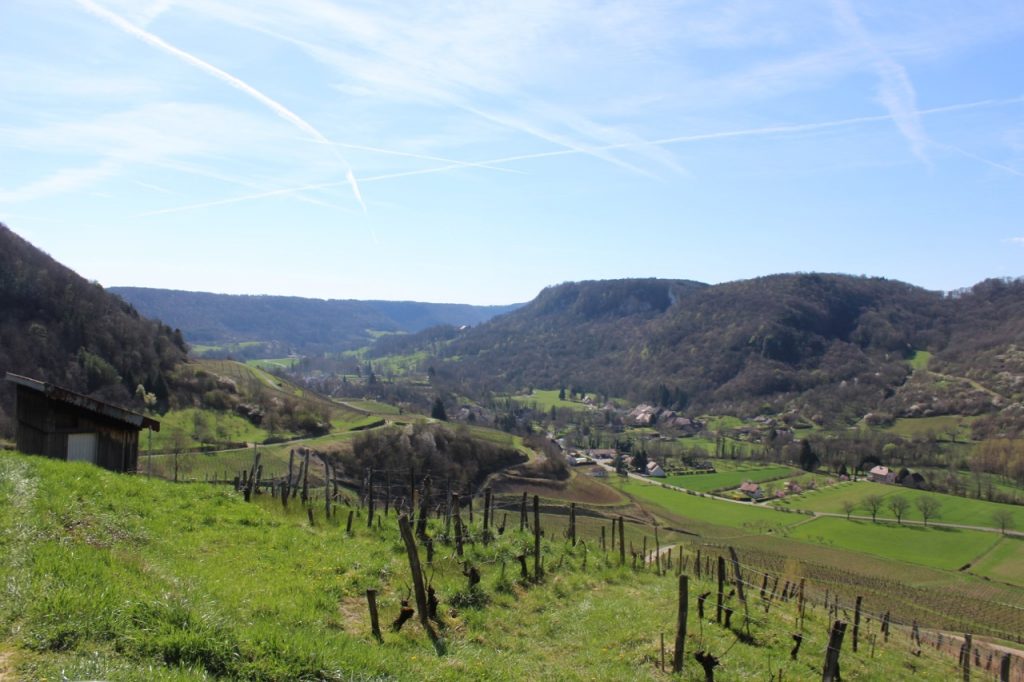
While Tradition is upfront and impressive as a relatively youthful wine, by contrast Damien is playing the long game with his Château Chalon. Damien explains, “I want powerful wines, but not powerful at the beginning.”
I tasted the 2010 Château Chalon, not long in bottle. The nose is surprisingly up-toned and fresh. Yes it’s oxidative, but also citrusy. The palate is tight and energetic. It’s bright and breezy with a fresh salty tang, notes of almond kernel and a straight and mineral finish. This was very different to the more bullish style I have tasted elsewhere. How does Damien achieve his more contemporary take on this traditional wine?
“Step by step,’ he tells me. “Let the wine make itself.” There seem to be two key processes. First point – make the base wine properly. It’s a bit like champagne where quality of the vin claire or the base wine is fundamental. You cannot make a silk purse from a sow’s ear, but plenty may try.
We tasted some 2016 base wine from stainless steel destined for Château Chalon. It had tension and a strong line, good acidity and energy. Slightly greengage flavours and light spice. Damien has experimented with some skin contact – lightly crushing a few handfuls of grapes (5kg), bagging them – in a sort of tea bag – and steeping this in the fermentation fro 24 hours. This gives a bit of tannic bite. We tasted the experiment on the 2015 Savignan young vines and Damien see this as a useful technique to increase the structure for long maturation.
Second point – the long ageing process should be cool and slow. This results in an elegant, lighter wine, which is still fruity and energetic and is yellow, not gold. Damien goes further and takes the heart of the wine and makes a special cuvée which has extra depth and complexity.
Vin Jaune can only be made in designated appellations of which Château Chalon is the most famous and arguably the finest. “Château Chalon makes the freshest and most mineral Vin Jaune,” says Damien. “This is a combination of the Savagnin, the soil here and the cooler deeper cellars. It is elegant, salty and fresh.” I’d roll with that.
Bed for the night: I can recommend the Chambre d’hôte Jardin Sur Glantine which lies behind a vast and sturdy door on the main street though Poligny. Housed in intriguing house of a German winemaker/former architect Ludwig Bindernagel, it’s a convivial place where guests are encouraged to gather in the salon to taste the mine host’s wine and his wife’s copious culinary platters – Comté, saucisson, pork rillette, tapenade etc. There was rather an international crowd of sommeliers, chefs and wine loving tourists the night I stayed.

